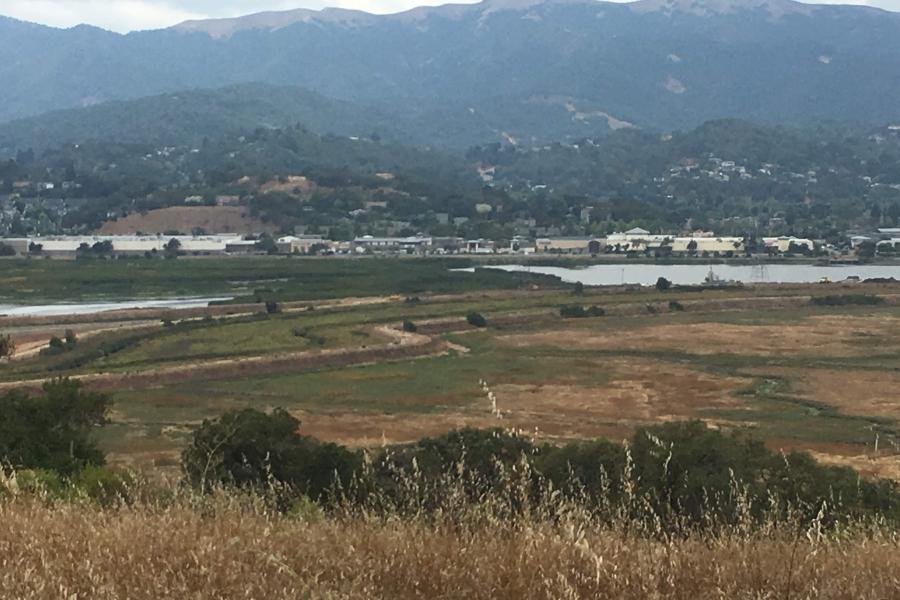Deer Island Basin Tidal Wetlands Restoration Project

$630,000 in the 2018 grant for planning and design; a further $2,423,000 in 2024 for Phase 1 construction.
Novato, Marin, North Bay Region
Permitting; Design; Final Design
Vital Fish, Bird and Wildlife Habitat Program and the Integrated Flood Protection Program; Shoreline Public Access Program
2024 UPDATE: In March 2024, the Governing Board of the Restoration Authority approved a grant of $2,423,000 to Marin County Flood Control District to implement the Deer Island Tidal Basin Wetlands Restoration Project: Phase 1 Construction, consisting of restoring 71.1 acres of tidal baylands; enhancing flood protection measures along 9,600 linear feet of existing levees, including the creation of 5,500 linear feet of ecotone slopes along the levees and raising of 2,800 linear feet of levee; and conducting three years of post-construction monitoring and adaptive management.
***
2023 UPDATE: In June 2023, the Board authorized an amendment to it's 2018 grant to Marin County Flood Control District for preparation of designs, environmental documentation, and permit applications for the Deer Island Tidal Basin Wetlands Restoration Project; to expand the scope of the work to include preparation of final detailed construction documents for a portion of the Project consisting of 77 acres of tidal baylands and creation of 5,500 linear feet ecotone levees at Deer Island, Novato, Marin County; and adoption of findings under the California Environmental Quality Act.
***
The 2018 authorization funds the preparation of detailed designs, permit applications, and environmental documentation for the Deer Island Tidal Basin Wetlands Restoration Project. Preliminary plans for the project provide for restoration of approximately 194 acres of diked, subsided and degraded historic tidal marsh to full tidal natural conditions, and the creation of 4,500 linear feet of adjacent ecotone levees in the Deer Island Tidal Basin in the lower Novato Creek watershed.
The end goal of the restoration project is to breach existing levees along Novato Creek and restore approximately 194 acres of diked historic tidal wetlands to full tidal function. The project will contribute to restoration of one of the most extensive remaining and important reaches of San Pablo Bay through helping connect a tidal wetlands habitat corridor that arcs across north three North Bay counties.
The requested funding will support preparation of designs, environmental review, and permit applications for the breaching and removal of the existing channel-confining levee around the creek and restoring natural fluvial-tidal action and processes within this restored basin along Novato Creek. Design studies will be completed for the restoration of approximately 194 acres of tidal baylands. Of that 194 acres, approximately 120 acres of diked baylands will be restored to tidal marsh in the ecologically significant freshwater-saltwater mixing zone, 36 acres will receive full or muted tidal restoration, and 38 acres of flood ponds will be restored to tidal ponds with specific habitat enhancements for birds, especially waterfowl Restoration plans will address designs for high-flow refugia for migrating steelhead, and rearing habitat for juvenile steelhead, including creating return channels within breached areas.
The project design will include the construction of approximately 4,500 linear feet of new set-back levees designed to create ecotone transition habitats with room for sea level rise adaptation and habitat migration. The project will serve as a demonstration of a natural levee approach and as a model project for sea level rise adaptation planning and design around the Bay edge.
